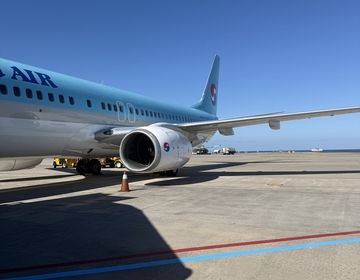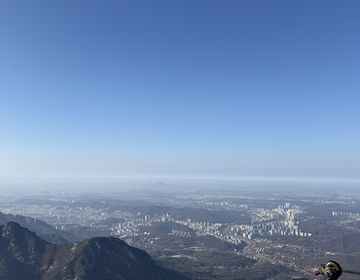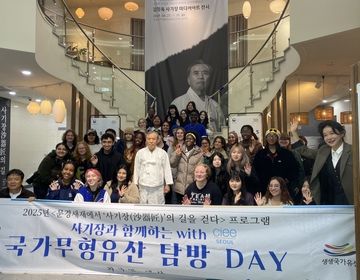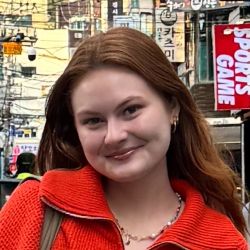Public Transportation in South Korea and How to Use it
One of the great things about South Korea is its easy access to public transportation. However, it can be a bit difficult to understand, this article will explain the ins and outs of Korean public transportation for easy use.
Travel Card (교통 카드)
Before using the bus or subway, you will need to purchase a travel card. These come in a variety of different forms depending on your length of stay. However, the easiest card to use is the standard T-money card. You can find them at all convenience stores around Seoul, and load money on them at any time with cash. They are roughly ₩2,500 and can be used on any public transportation system anywhere in Korea. The other type of card to consider is the Climate Card these are typically ₩60~65,000 a month and are like an unlimited swipe card with limitations. Those limitations being that it cannot be used outside of Seoul, Gyeonggi-do buses, the Shinbundang Line, airport buses, or night buses. Therefore, your decision should be based on how often you use public transit and where you intend to go.
Bus
The bus system in South Korea consists of 4 colored lines:
Red: This is the express bus mainly for commuters traveling between downtown and Central Seoul.
Green: Runs outside downtown Seoul and brings passengers near subway stations.
Blue: This is the mainline that goes through downtown Seoul and into more suburban regions.
Yellow: Brings passengers to subway stations, business districts, and large tourist attractions all within Seoul
Steps to riding the bus:
- When riding the bus you should first determine the bus station to be at and the number of the bus you need to take.
- Prepare your money card and tap it when entering the bus.
- Remember to watch, be aware of your stop and press the red stop button when nearing the station you would like to exit on.
- Tap your money card and exit through the back door.
Tips for the bus:
- Pay close attention to your maps and make sure you are at the right bus stop.
- When the bus number is scrolling at the bottom of the screen the word and color next to it indicate how crowded it is.
- Green (여유)
- The bus is not crowded and there are seats available
- Yellow (보통)
- It is a bit crowded, you may have to stand
- Red (혼잡)
- The bus is practically full and crowded
- Green (여유)
- People are typically pretty quiet on the bus so be mindful and keep talking to a whisper.
- Food and drinks are not allowed on the bus, but there is usually no problem if they are closed or you refrain from drinking/eating while on the bus.
- Most of the buses stop running around 12:00 am so plan accordingly.
Personally I find the bus system to be harder to use than the subway. The reason being because there are multiple bus stops with the same name and two buses typically share the same number but travel in opposite directions and it can be difficult to find the right one. Additionally, although both buses and subways get incredibly crowded, I find rush hour on the bus is worse. Because of the many turns, harsh braking, and unstable hand holds the bus can be somewhat daunting.
Taxi
Taxis are a great option in Seoul, especially once the bus stops running, or after a long day/night because they are pretty cheap and very clean. If you plan to hail them the old fashioned way just know that the green sign means they are available and red means they are taken or reserved. There are also apps you can use to reserve taxis such as Kakao T, T-map, and recently TADA which is geared towards foreigners. For most of these apps getting a cab is easy and all you have to do is enter your address, confirm the driver, and you can either pay in-app or after the ride. One great aspect is that you can even use your T-money card to pay the fee.
Subway
During my time in Korea, my favorite method of transportation has been the subway. While it looks confusing, I find it to be the most convenient, and NaverMaps friendly. First things to know are that you can reload your T-card in the stations, you tap to get in and to get out like most subways, and all of the colors have two trains bound in opposite directions. There are 9 lines, with Line 2 (green), Line 4 (light blue), and Line 6 (brown) being the most commonly used. Line 2 takes you to popular spots such as Sinchon, Gangnam, Jamsil, and Seoul National University.
When using the subway, find the line you wish to take and make sure to check the signs and map to make sure it is going in the right direction. If you are using NaverMaps, the app will even tell you which car to go board in order to transfer faster and find the right exits. The subway maps also show where to get off to transfer to different lines. The South Korean subway is also unique in that there are many small shops underground for food, shopping, and general goods so I recommend taking advantage of those businesses.
Tips for the subway:
- Try to avoid rush hour, it gets incredibly crowded and there is a lot of pushing to try and board. I had a professor who mentioned how shorter people have it especially hard because those around them make it hard to breathe and you tend to get squished.
- The subway is also relatively quiet, however, I feel like there is more conversation than the bus.
- While traveling with a larger bag there is overhead storage.
- Trains come roughly every 5-10 minutes and stop running around 12 am
- Food and drinks are also not technically allowed, so try to keep them closed or in your bag.
Overall Transit Tips:
- Try to avoid rush hour
- Public transport is typically pretty quiet
- Pay close attention to colored seats, those right next to the door or stand alone seats, they are reserved for pregnant women, elderly, and those with disabilities or injuries.
- Taping in and out allows for a discount on transferring, even between subways and buses.
Related Posts

Soul Searching in Seoul: Everything I Learned and What I Wish I Knew
Before I start crafting my “study abroad changed me” answers for friends and family, here are the practical things I wish I’d known. The things that would’ve saved me time... keep reading

A Seoul Escape to Bukhansan
Get out of the hustle and bustle of Seoul and head to the peak of Bukhansan!

My Time in South Korea Attending Yonsei University: A Life-Changing Chapter
By: Zahrraa Al-Salman Studying abroad had always been a dream of mine—an opportunity to step outside of my comfort zone, immerse myself in a new culture, and deepen my understanding... keep reading
